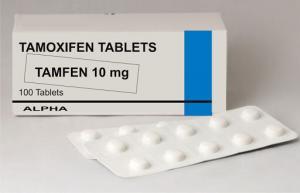Where to Buy Nolvadex?
Are you looking for the best place to buy Nolvadex (Tamoxifen) online? We suggest you place an order and buy Nolvadex (Tamoxifen) otc from our partners, an online pharmacy store. Cheap high-quality products, a wide range of medicines, hot discounts, and worldwide shipping will make you return to this website again and again.
Nolvadex
Nolvadex may be marketed under different names in various countries. All of them contain Tamoxifen as main ingredient. Some of them are the following: Adifen, Adopan, Apo-Tamox, Bagotam, Bilem, Bioxifeno, Citofen, Crisafeno, Cryoxifeno, Defarol, Diemon, Dignotamoxi, Doctamoxifene, Ebefen, Emalook, Estrocur, Estroxyn, Farmifeno, Femoxtal, Fenobest, Festone, Genox, Ginarsan, Gynatam, Jenoxifen, Kessar, Ledertam, Lesporene, Luzamoxin, Mamofen, Mandofen, Mastofen, Neophedan, Nolgen, Nomafen, Norxifen, Nourytam, Novofen, Noxitem, Oncotam, Oncotamox, Oxeprax, Panleef, Phenolurn, Puretam, Ralsifen-X, Respol, Rolap, Sinmaren, Soltamox, Tadex, Tamaxin, Tamec, Tamexin, Tamifen, Tamizam, Tamobeta, Tamofen, Tamofene, Tamokadin, Tamona, Tamone, Tamoneprin, Tamooex, Tamopham, Tamophar, Tamoplex, Tamosin, Tamox, Tamoxan, Tamoxasta, Tamoxen, Tamoxene, Tamoxi, Tamoxifène, Tamoxigenat, Tamoximerck, Tamoxin, Tamoxis, Tamoxistad, Tamsulon, Tasuomin, Taxfeno, Taxofen, Taxus, Tecnofen, Tecnotax, Terimon, Trimetrox, Virtamox, Yacesal, Zemide, Zitazonium, Zymoplex, duratamoxifen.
 |
 |
 |
 |
 |
 |
 |
 |
 |
 |
General Information
Nolvadex, also known as Tamoxifen, is a drug that is frequently prescribed to treat breast cancer. It is a member of the group of medications known as selective estrogen receptor modulators (SERMs). Tamoxifen functions by obstructing the actions of estrogen, a hormone that has the potential to stimulate the proliferation of specific subtypes of breast cancer cells. People with hormone receptor-positive breast cancer, in which estrogen receptors significantly influence the development of the cancer, often take them.
Tamoxifen is prescribed not just for the treatment of breast cancer but also as a preventive step for people who are at a high risk of developing the disease. Although Nolvadex has been shown to have benefits, it also has potential adverse effects, so it’s crucial to discuss its use in detail with a healthcare provider.

Content
Tamoxifen citrate is the active component of Nolvadex. A selective estrogen receptor modulator, or SERM, tamoxifen citrate functions by obstructing the effects of estrogen in particular tissues, especially the breast. This aids in preventing the formation of breast cancer cells that are dependent on estrogen.
The medicine may contain excipients or inactive substances in addition to the active ingredient. These can change based on the medication’s brand and particular formulation. The inactive components of Nolvadex might include coatings, binders, and fillers that aid in the production and stabilization of the medication.
Indications
For more than 30 years, Tamoxifen has been used to treat breast cancer, particularly when the cancer is hormone receptor-positive. Estrogen is essential for the growth of hormone receptor-positive breast tumors, while Tamoxifen helps prevent estradiol from having an impact on cancer cells.
The medicine is prescribed for premenopausal and postmenopausal women with hormone receptor-positive breast cancer. It can be used to lower the chance of cancer recurrence as part of the initial course of treatment or following surgery, chemotherapy, or radiation therapy.
Nolvadex may occasionally be prescribed to women who are at a high risk of breast cancer as a preventative measure. It has been demonstrated to lower the incidence of breast cancer in females who are at high risk for developing the illness.
Treatment options for ductal carcinoma in situ, a non-invasive kind of breast cancer, include Tamoxifen.
Tamoxifen may be used to assist in stopping the growth of cancer cells in cases where breast cancer has spread to other body areas.
It’s crucial to remember that a medical practitioner should prescribe Nolvadex and that the patient should be informed of both the advantages and risks. Several individual characteristics, including hormonal status and general health, influence tamoxifen prescription decisions. The medicine is not appropriate for treating all forms of breast cancer.
Dosage
Nolvadex (Tamoxifen) dosage varies according to the particular medical problem being treated. It’s critical to adhere to a medical practitioner’s recommended dosage and directions. Doses can be changed depending on each patient’s unique needs and how they react to the drug. Here are a few recommendations:
| Condition | Dosage | Treatment Length |
|---|---|---|
| Adjuvant treatment of breast cancer | 20 mg once daily | 5 years |
| Prevention of breast cancer | 20 mg once daily | The treatment length for prevention of breast cancer may vary depending on individual risk factors and medical advice. |
| Ductal Carcinoma In Situ (DCIS) | 20 mg once daily | 5 years |
Taking Nolvadex as prescribed and speaking with a doctor before adjusting the dosage is crucial. You must communicate any worries with the prescribing physician if they relate to the medication or its side effects. Furthermore, arranging frequent follow-up sessions to assess the treatment’s efficacy and handle any possible problems is standard practice.
Precaution
Blood clots, which can be fatal, may appear during treatment with Tamoxifen. If you have a history of blood clots or any circumstances that could put you at risk for clotting, let your healthcare professional know.
There is evidence connected with Tamoxifen of a higher risk of uterine cancer. Inform your healthcare professional as soon as possible about any unusual vaginal bleeding or symptoms.
Nolvadex may rarely cause visual issues. Tell your doctor if you notice any changes in your vision.
Nolvadex should not be taken during pregnancy because it could affect the development of the fetus. Talk to your breastfeeding provider about the advantages and disadvantages if you are nursing a child.
Tell your doctor about everything you take, including over-the-counter and herbal supplements. Nolvadex may interact with certain medications.
While taking Tamoxifen, it may be advised to test liver function regularly.
Nolvadex may cause changes in menstrual cycles and heat flashes. Talk to your healthcare practitioner about any symptoms that are bothering you.
Talking to your doctor about bone health is crucial, particularly if you have additional osteoporosis risk factors.
It is important to follow your doctor’s instructions when taking Nolvadex and get their advice before stopping or adjusting the dosage. If you encounter any uncommon or severe side effects, get medical help immediately. Follow-up sessions are usually arranged on a regular basis to track your reaction to therapy and address any concerns.
Do Not Take Nolvadex in the Following Cases
Some medical conditions may make it contraindicated to take Nolvadex. This means that people with these diseases shouldn’t use the medicine because there could be side effects.
- Because Nolvadex may harm the unborn child, it should not be used during pregnancy. Using reliable contraception while taking Tamoxifen is crucial for fertile women.
- Tamoxifen may raise the risk of recurrent blood clotting in those who have previously experienced deep vein thrombosis (DVT), pulmonary embolism, or blood clots.
- In certain people, Tamoxifen may raise the risk of stroke or Transient Ischemic Attack (TIA).
- Tamoxifen should not be used by people who are allergic to it or any of its constituents.
- People who have severely impaired liver function may find it difficult to take the medication.
Tamoxifen may interact with other drugs when taken concurrently. Tell your doctor about everything you use, including over-the-counter medications and herbal supplements.
Side Effects
Like any medicine, Nolvadex might have adverse effects. It’s crucial to remember that not everyone will have these adverse effects, and some may only have moderate ones. Common side effects include:
- The drug may result in hot flashes that resemble menopausal hot flashes.
- Women may notice irregularities or other changes in their menstrual cycles.
- Some women may experience changes in their vaginal dryness or discharge.
- There have been reports of mood swings, as well as depressive sensations.
- The medicine may make you feel drained or exhausted.
- Nolvadex may cause headaches as a side effect.
- Joint or bone pain might affect some persons.
- Nolvadex may raise the potentially fatal risk of blood clots.
- Tamoxifen use is connected to a slight increase in the risk of uterine cancer.
Notifying your healthcare practitioner of any adverse effects is crucial, mainly if they are severe or chronic. There are also less frequent but more severe side effects, so it’s essential to be aware of any strange symptoms and get medical help. As part of the treatment plan for Nolvadex, regular examinations and monitoring are usually included to address any possible problems.
Overdose
If you overdose on Nolvadex, you should get medical help right away. Even though unintentional overdoses are rare, it’s essential to recognize the signs of a possible overdose and act quickly. Overdose symptoms can include unusual weakness or exhaustion; unexpected bleeding or bruises; ongoing nausea or vomiting; stomach ache; disorientation or mental state modifications; epilepsy.
Go to the closest hospital room or call your local emergency services if you suspect an overdose or see any of these symptoms. Notifying medical personnel of the overdose and providing specifics regarding the quantity of Nolvadex consumed is crucial.
For Nolvadex overdose, there isn’t a specific counteragent; instead, supportive care is usually provided. Depending on the person’s health, this may entail giving the proper medical care and taking steps to manage symptoms.
Nolvadex should be used exactly as directed by your doctor, just like any other drug.
Storage
Tamoxifen should be kept at room temperature, often between 20°C and 25°C (68°F to 77°F). Avoid really cold temperatures. Tamoxifen should be kept out of the reach of young children and animals. If possible, use child-resistant packaging.
Always check the medication’s expiration date. If the date has passed, do not use the drug.
If you have any specific questions about how to store your medication or if you have any doubts about its use, see your pharmacist or healthcare provider for advice.



































